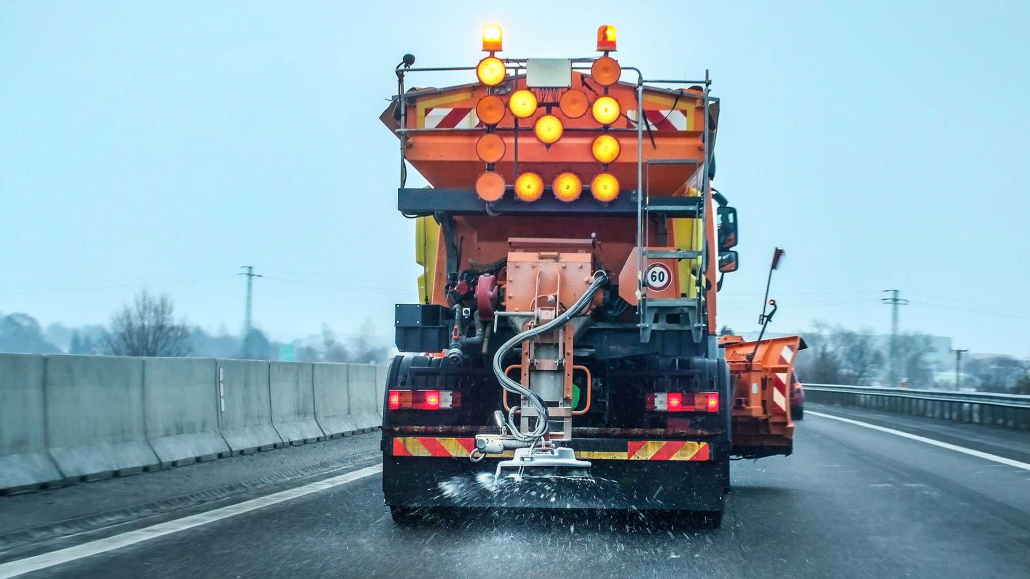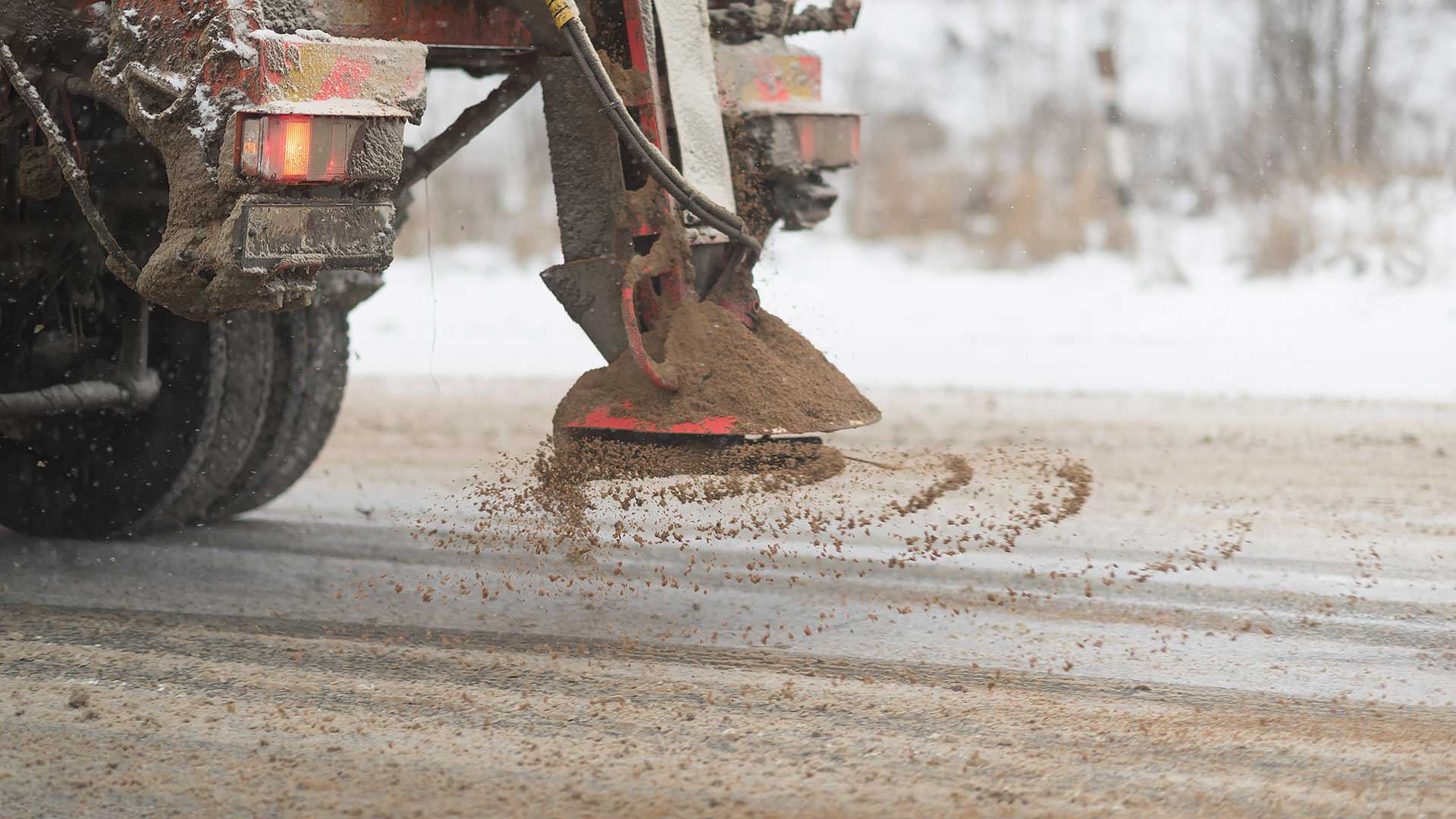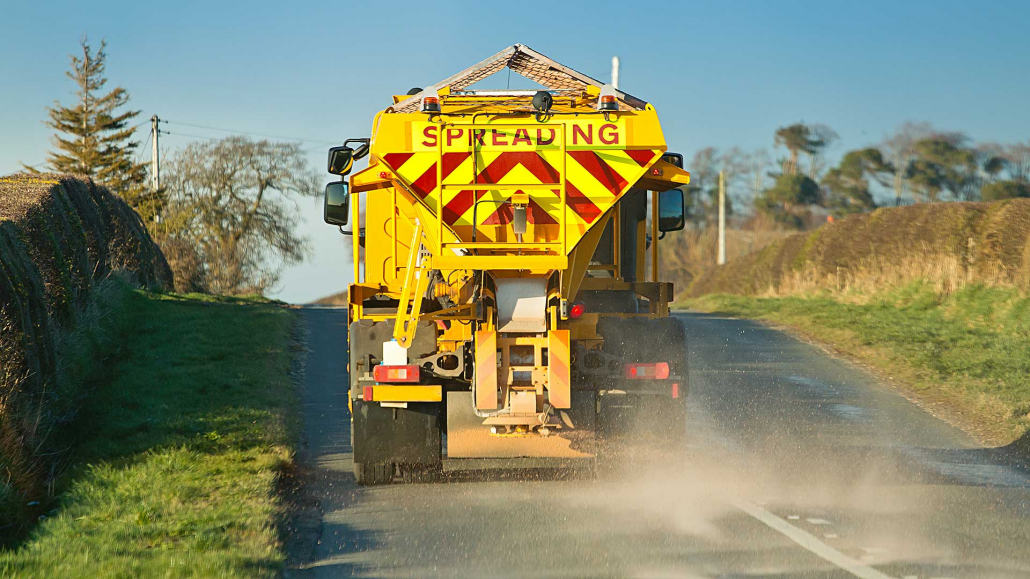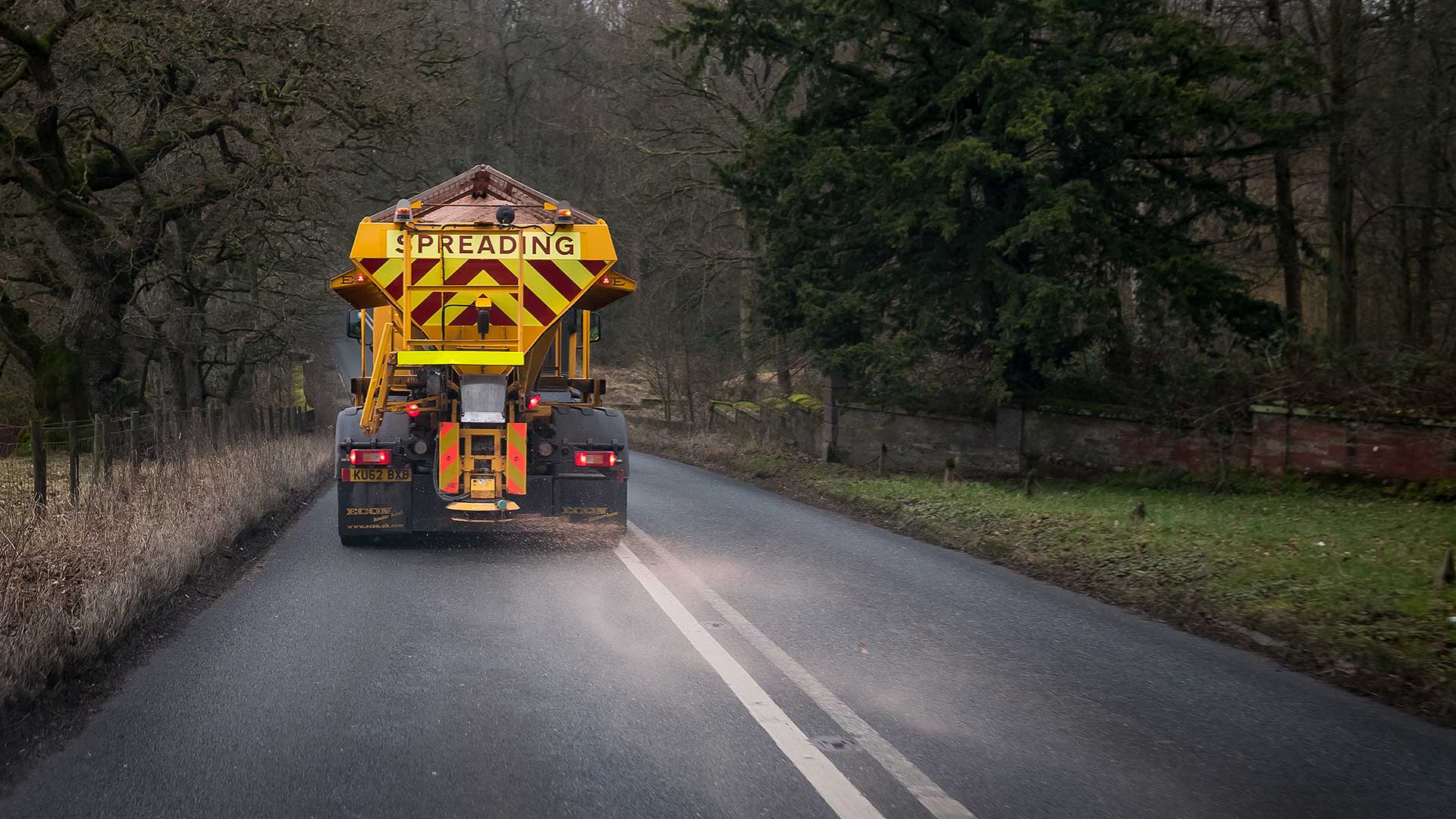
to improve grip and reduce the risk of accidents.
Gritting trucks travel slowly and you will probably need to overtake them at some point. But does passing a road gritter inevitably mean stone chips and damage to your vehicle?
We explain what you need to know when following a road gritter, including how to pass with maximum safety and minimal risk to your car’s windscreen or paintwork.
What is road grit?

Road grit is not actual ‘grit’. Years ago, it was a mix of sand, small stones and salt, but rock salt is now used instead. This is softer and less likely to cause damage than stones. The sound you hear is often the ‘splatter’ of salt, rather than the impact of tiny rocks.
, so the spread rate can be reduced – also helping lessen the risk of damage to passing cars.
Sometimes, grit is dampened before being spread, so it begins acting on the road surface more quickly. Again, this makes it less likely to damage passing cars.
Rock salt is largely sourced from three huge underground mines in the UK. It is ground away by machines rather than by hand. Before being transported to storage depots, it is treated with an anti-caking agent.
How do road gritters operate?
. On three-lane carriageways, gritters will drive in the middle lane, so all three lanes can be treated equally.
Usually, when a gritter is spreading salt, its amber lights will be flashing as a warning to other road users.
Salt spreading is automated and adjusted by speed. When the gritter stops, it will cease spreading salt until it moves again. The equipment at the rear contains an ‘agitator’ to ensure the salt is spread as evenly as possible.
Will following a road gritter damage my car?

can be a horrible sensation; it sounds like your paint and windscreen are being chipped to pieces. However, thanks to a combination of the latest road grit and salt spreading technology, it often sounds worse than it is.
If you’re careful about how you follow a gritter, the risk of damage should be minimal. You just need to go about it in the right way.
What is the safest way to pass a road gritter?
The best way to pass a road gritter is to minimise your time exposed to danger. In this case, it’s the spray of salt from the rear of the vehicle. Hang back, out of the way of the road grit, then swiftly overtake when it is safe and clear.
Your objective should be to minimise the clattering noise you hear. If you’re on a single carriageway, leave a clear distance until you pass. On a motorway, do the same, but without ‘lane-hogging’.
On four-lane motorways, gritters will often travel in the second lane. Experienced drivers will travel in the fourth lane with a second car in the third lane acting as a ‘shield’ between them and the road gritter. It’s very satisfying when you manage it…
What if I think a gritter has damaged my car?
who think their car has been damaged and want to seek compensation. However, it also has a disclaimer: ‘You can’t claim compensation if debris from another vehicle caused the damage. Contact your insurer instead’.
It is unlikely that a claim for chipped paint or a broken windscreen that you believe was caused by a road gritter would be accepted. If you could provide clear evidence, though, such as dashcam footage, it could be worth trying to get compensation.
How do I spot a road gritter?

You would think spotting a road gritter would be easy. Not for some: every year, there are around 40 incidents of people driving into gritters. If the expensive salt-spreading equipment at the rear is damaged, the gritter will be forced out of action.
Following research with the Transport Research Laboratory, Highways England now paints its gritters in one block colour: bright orange. This emphasises the ‘solid’ shape of the vehicle, which the research indicated would help salt spreaders to stand out as much as possible.
How advanced are the latest road gritters?
The latest road gritters used by National Highways sre built by Romaquip. They feature technology that allows route information to be pre-programmed using GPS.
This means salt is spread automatically, taking into account bridges, road features and other specific landscape details. It means salt isn’t wasted, drivers can fully concentrate on the road and, theoretically, there’s less risk of ‘stray’ salt being splattered onto cars rather than the road.
The UK’s biggest operator of road gritters is National Highways. It runs more than 500 winter vehicles to cover 4,400 miles of motorways and A-roads.
What about gritting local roads?
National Highways is only responsible for motorways and A-roads; local roads are the responsibility of the council in that area.
into the GOV.UK online tool.
What NOT to do when you see a road gritter
Remarkably, National Highways says some drivers take to the hard shoulder of a motorway to avoid a road gritter.
Quite apart from being illegal, this is highly dangerous, as stranded cars could be hidden from view. Also, if the road is untreated, the area most likely to be icy is the unused section of the hard shoulder…
READ MORE:
The best car features for winter driving
How to drive safely in heavy rain
When will each car brand end petrol and diesel sales in the UK?


Post a Comment
0Comments